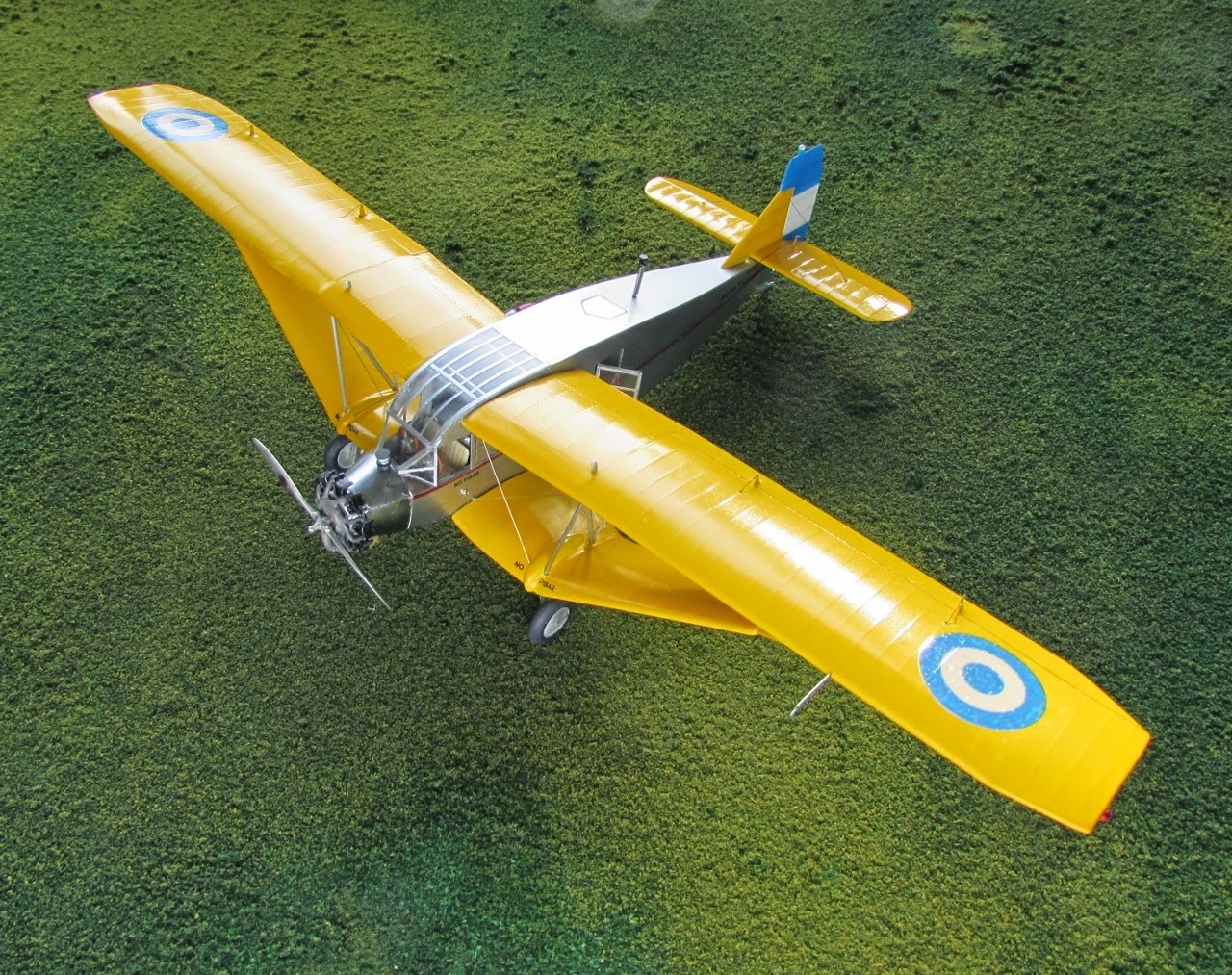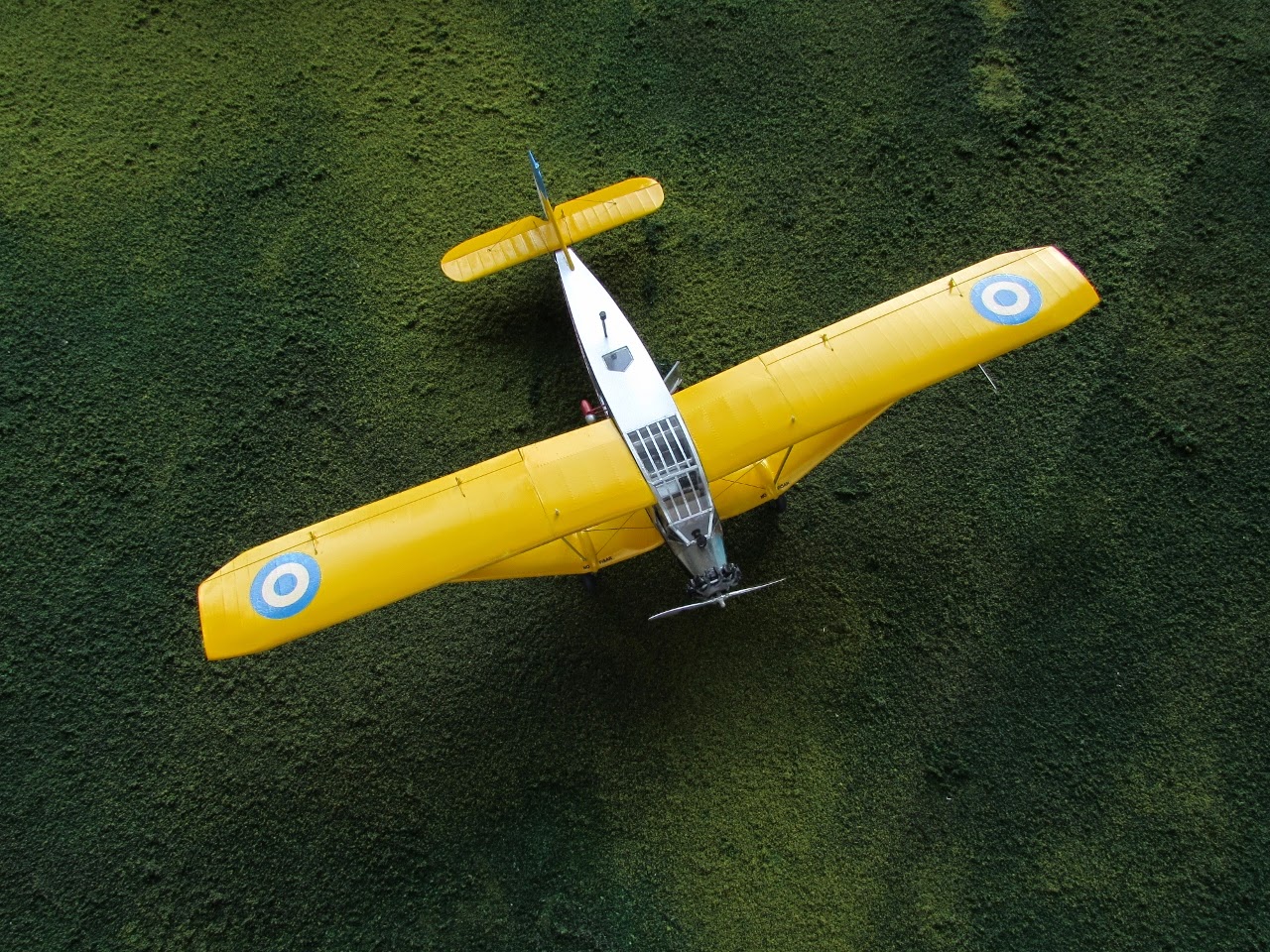The Argentinean Bellanca Model "K" and the flight that never was
The research stage of this particular plane was anything but easy.
The Internet provided some basics, and other bits of information were found in diverse newspapers of the era, contemporary magazines and in one section of the book "El regreso del águila" (The Return of the Eagle) by Oscar Durañona. More good info came from Tom Polapink at Skyways Magazine and indispensable documents and graphics from George Kandylakis, the latter via a connection kindly made possible by Kees Kort. Lars Opland helped in clarifying some points.
Special thanks to Dave W. Ostrowski who provided invaluable images of the Argentinean incarnation of the "K".
To all my gratitude
There is a special breed of planes which appearance is rather
ungainly, odd, or plain weird; but that same "specialness" is what
makes them attractive and the object of much love and notoriety. The Bellanca K
surely belongs to that aviation evolution strand, with its biplane
configuration, gull-like upper wing and lower "W" wing, lumbering
fuselage, and squatty stance.
The Bellanca K was to a certain extent, design-wise, the
successor of the "Columbia"
and the predecessor of the
Airbus/Aircruiser family, the latter being just a refined, tuned version more
apt for useful commercial life than for record-making. And that last statement
takes us to the genesis of the Bellanca K, a project born from a request for a
plane for a record flight attempt, from New York
to Rome. An
all-Italian enterprise that Bellanca, being of Italian origin, supported. The
first incarnation of the K therefore was aptly named "Roma". The
attempt foiled almost immediately after take off due to engine trouble. The
plane was repossessed by Bellanca, and then, of all things, two Argentinians
knocked the door.
Pilots Diego Arzeno and Claudio Mejía wanted to purchase the
"Roma" for a different long-haul flight, one from Buenos
Aires, Argentina,
to Seville, Spain
(some newspapers of the time stated, blessed by utter ignorance, that the flight
would be from Buenos Aires, Brazil (SIC), to Spain).
They made a down payment of $10,000 but requested some
modifications and adjustments be made, the most obvious that Bellanca fix the
troublesome engine issues. The "Roma" distinctive marks were erased, and the
most visible exterior change is the addition of the trademark Bellanca battens along the fuselage sides.
During its short Argentinean tenure it had many names:
"Siete Leguas" in allusion to the Seven League Boots; "Virgen de
Lujan", to honor a famous avatar of the virgin -popular amongst catholics-
back in the country and other names.
The bugs on the plane were never fixed, so after some bickering
and much delay, the Argentinians, fed up with the plane's unacceptable
vibrations and other glitches, requested their down payment to be refunded, and
went on and bought the famous Fokker Trimotor "Friendship". The
Fokker did actually arrive to Argentina on a ship, however the flight also never was to be...but that's another story.
The debacles caused by Bellanca's plane refusal to live up
to the standards of reliability needed, were cleverly twisted in the press by
the Bellanca firm, as newspaper clippings show. The company hinted (with the
clear intention of displacing blame and responsibility) in both occasions to
"disagreements" between pilots and backers or those and the company.
It never points out, for example, that the Roma flight did take place, only to
immediately return due to engine failure as said before. This despicable
company attitude to deflect blame and disguise or omit facts sounds...well, too
familiar, and from 1929 to today seems that not much has changed in that
regard.
The performance and reliability Bellanca was after will be achieved later, on the Airbus and Aircruiser, but was far from being present in the K.
The plane will go on, with different color schemes, to the
hands of African-American pilot Hubert Fauntleroy Julian for a flight that did
not materialize either, and as the Enna Jettick, in another failed flight that
ended in a crash.
Whilst the "Roma" did not have the battens along the fuselage sides, later incarnations did:
The fuel tank area is marked:
And then treated with a pounce wheels to simulate riveting:
The Argentinean K tried two engines, a Pratt & Whitney Hornet and what looks like either a Wright Whirlwind J-6 (in photo) or a Cyclone, neither solved the severe vibration problems that the Argentinean pilots thought was caused by the engine mount instead:
A dome is vacuformed and tailored into a bigger shield:
Unable to locate Aeroclub item AV004, I had to make my own control wheel yokes:
The spars for the lower wing are given the right tapper:
The wing, built as one piece, is first halved, then the stub wings (wing tanks) are also separated and angled:
The spars are glued on the lower wing, a rib is placed at the root:
The pilots sat on the oil tank. The bench seat is built -it will be glued on top of the oil tank-, and also the fuselage fuel tank. The tank left a crawling space that communicated in case of necessity the cockpit and the cabin -located after the tank-:
Wing tip airfoil before capping:
Wing root airfoil:
State of affairs:
Metal control horns are inserted in elevator, rudder and ailerons:
The fuselage fuel tank:
Lower wings prepared:
A "V" cut is performed. Note that towards the root there is a short segment that angles downwards :
Then glue is applied and the half-wings are bent to the proper angle:
The wheels, which are a spare from a Khee-Kha Art Products vacuformed kit, need discs to be added to match photos of the plane:
The wheel wells are lined, the excess will be trimmed-off once the glue has set:
The single-blade retractable wind-driven generator for the radio is
made. There are lots of details that have to be worked out as you go
with the construction:
The wells are ready:
The famous Bellanca "lifting strut" forked at the tip to meet the upper wing. So the lower wing tips were capped and connecting struts were shaped from the ever-dwindling supply of Contrail airfoiled stock:
Fairings can be seen in photos above the area of the lower wing where the landing gear attaches, in the form of elongated teardrop blisters. These enclosed part of the retracting mechanism and shock absorption. I used halves of discarded bombs(always good to find better uses for those), curved and slightly reshaped:
The fairings are glued on the wings:
The fuselage assembly starts:
Firewall is added:
A general view, still trying to confirm the other right engine for the Argentinean version, therefore keeping the three engines at hand:
The nose receives the structural parts needed for the engine mounting. Around them the panels will eventually be added:
Some parts for the cockpit and some for the aft compartment using some leftover photoetched parts:
The floor is in place. Parts that are curved are prepared first working them with a wood dowel, and later installed:
Independent floor sections are prepared for the cabin and cockpit, they will be painted apart and then installed in the differently-painted fuselage interior:
Several tiny notches are made in the window as per original. They will hold the rods that swing and anchor the wind-driven generator once all painting is done. The floor is still drying and will later be sanded smooth at the corners:
An engine was prepared grinding and adapting parts from different spare bin spares to render the Wright Cyclone with the front collector ring used in the Argentinean modification:
Color is applied to some of the interior parts:
The "petals" of the cowl are pre-bent and tailor-fit. The parts that constitute the bottom of the fuselage have not been tidied-up yet:
All the cowl panels are now in place, held by tape while they dry. The pilots bench is painted. This will be added once the cockpit floor sub-assembly is in place, otherwise the whole could not be inserted to the existing opening:
The nose is already covered:
The engine dry-fitting goes well:
The fairing for the tailskid is glued in place:
Decals are printed:
The tailskid is finished:
The parts for the anemometer of the earth inductor compass:
The finished pole:
Radio and shelf to be added to the cabin:
The interior is completed:
The top of the fuselage with the hatch is glued:
Another view. The upper hatch has some thin flanges inside that will hold the clear part:
Part of the door and a Venturi:
The roots of all wings are capped with a thick piece of styrene. The latter will be contoured as needed to follow the fuselage curves. The original had a metal strip fairing:
A view of the progress. The anemometer is there only for the sake of the photo:
The prop is given its decals. Whilst the prop of this engine (Cyclone) had the oval logo, the "standard" P&W Hornet engine prop as seen on the ROMA had the old airfoil-style one.
Aluminum tube spars are cut and slide into position:
Using a pattern they are bent to the proper angles:
Upper wings in place (dry-run):
Lower wings in place (again, dry-run):
A view from behind:
The landing gear is made:
Some details are taken care of, the fin gets a locating pin, the engine exhaust and extension seen in photos, holes are drilled for the stab struts, rigging and control cables:
The baffle at the end of the exhaust:
Some weathering:
A compass that was located outdoors ahead of the windshield is fabricated:
Getting ready for priming and painting:
A coat of primer is airbrushed:
Other details are prepared: window panes, navigation lights, the wind-driven generator supports:
Painting starts:
The nose of the fuselage, which is bare metal, receives first gloss black as a base:
Paint is airbrushed:
Masks removed:
And now that area is min turn masked so the rest of the fuselage can be painted doped aluminum, together with the external side of the door and the wheels centers:
The other aluminum shade is applied:
The completion of detail parts continues: the door and the rudder with the Argentinean colors and the nav light on top:
The wheels and the single-blade wind-driven generator are painted:
A thin decal strip is used to color the batten running alongside the fuselage:
The assembly of the main components can begin. Here a dry-run fit test:
Even when the airplane was bought with private monies, and had no official government registration, for some reason the Argentine roundels were painted on it.
As tremendously intelligent (and known iconoclast) Argentinean writer Julio Cortazar would say: another case of "patrioterism" (sort of forced-upon patriotism):
The upper clear cover is being tailored:
A specific curvature is imparted on it for a good fit:
Taking shape:
Addition of details continues. The wing and tail struts are in position, some of the rigging, nav lights and so forth. To the side fittings to be added to the wing tanks are seen ready to apply:
Many more details, decal strips, rigging -and more hours of work- are ahead, being careful not to knock down, mar or mangle other things or the finish:
The completed model is in this post:


























































































































































